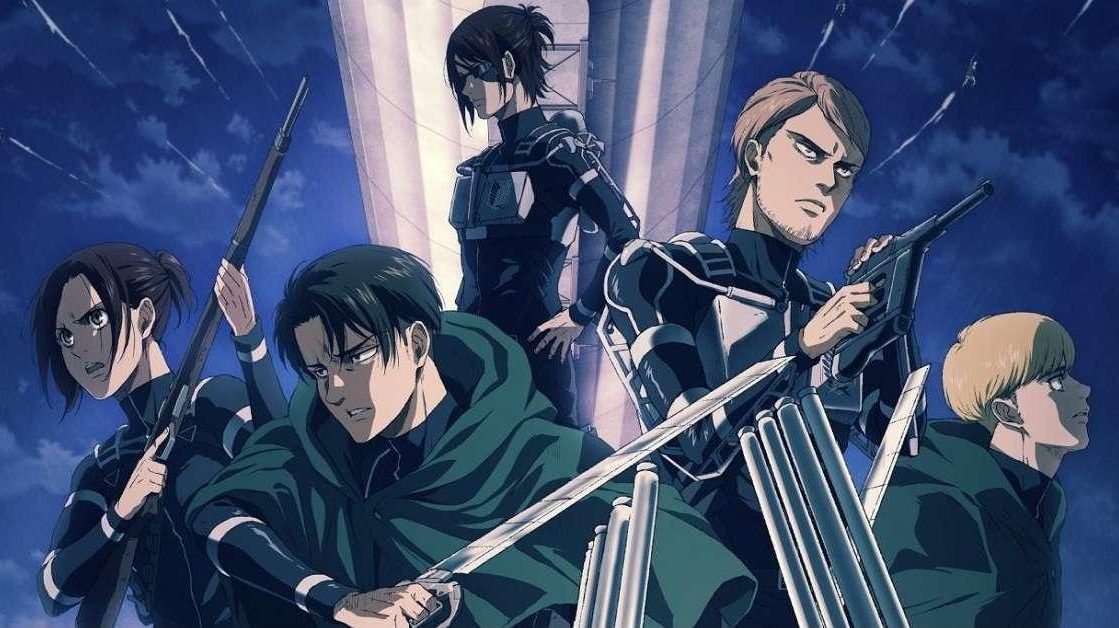Japanese broadcaster NHK has announced that the first two episodes of Attack on Titan: The Final Season Part 3 would show as a single, two-hour episode. As previously reported, the broadcast date for the special is March 3. No debut date has been established for the second half of Part 3, although it will air later this year. Once it finally airs, Attack on Titan will finally be moving forward after a long, frustrating wait. The first episode of the anime based on Hajime Isayama’s manga aired in April 2013. Three seasons and 59 episodes later, in July 2019, the series came to an end. After a year off and the announcement that this would be “The Final Season,” the show returned in 2021.
Part 2 of that season’s run will conclude on May 1, 2022, with a total of twenty-eight episodes. Part 3 of The Final Season, which itself was split into two parts, was then officially announced. Since this, some viewers have joked that The Final Season will never end because it will be split up into smaller and smaller parts. A portion of that worry was allayed by NHK’s declaration on Thursday. Thus, it was established that the “first half” of The Final Season Part 3 would be a one-hour special showing on March 3, as had previously been announced.
The second half was also implied to be a one-hour special, however, this was never officially confirmed or given its own broadcast date. That means there are only roughly four standard episodes remaining in the Attack on Titan run, putting to rest concerns that the producers might try to stretch what manga content was available into two full courses of 12-13 anime episodes. Even still, by the time the Attack on Titan anime is finished, more than 10 years will have passed. And although Wit Studio produced the first season, MAPPA took over for the conclusion. NHK will air a seven-part compilation series of the preceding animation content, over the course of three nights, commencing on February 25 as a tribute to the legendary run before the beginning of the end.
The most recent developments
Part 3 of Attack on Titan’s last season will premiere on Saturday, March 4 at 12:25 a.m. JST. This has allowed viewers to study up on the show, which has allowed them to discover new and intriguing tidbits about the show’s vast cast of characters. The markings that appear beneath the eyes of every Titan Shifter in the series, including Eren, Zeke, Armin, etc., have been the subject of at least one such discussion. The longer and more pronounced these markings are, the older these characters are.
In Attack on Titan, why do some characters have black eye marks?
Marks beneath the eyes, which usually become more pronounced throughout the course of the series, are a defining characteristic of every Titan Shifter. It is the shifters’ human eyes’ optical link to their titan bodies that have left these markings on their skin. Increased strain on the tendons causes poor blood flow and persistent scarring under the eyes, where the link is created. In Attack on Titan, the joined flesh of the Titan and the shapeshifter renders the latter immobile. There, their eyes are wired into the Titan body, allowing the enormous avatar to see. This metamorphosis places them in the Titan’s nape of the neck, where they may exert dominion over the creature and guide its use of devastating weapons.
As we have seen previously, Titan Flesh generates a great deal of heat, whether it is through Bertholdt’s Colossal Titan’s ability to roast Armin or from the transformation process itself. As a result of their increasing usage of their Titan bodies, characters like Eren, Zeke, Reiner, etc. get more pronounced eye marks. As far as we can tell, the eyemarks that develop on the Titans as a result of their metamorphosis do not pose any threat to their physical well-being in Attack on Titan. Eren Yeager serves as the finest example of how these eyemarks develop throughout the course of the series, with his own markings evolving from barely noticeable to obnoxiously glaring.
Zeke, Reiner, and the Ymir are a few more characters who stand out for displaying this quality, especially with the respective lengthy uses of their respective Titan abilities.
Conclusion
In the Attack on Titan manga, Hajime Isamaya uses the black and white features manga to give the eyemarks more depth, making them easier to see. Titan shifters pay a tremendous price, both in terms of their physical and emotional well-being, and in terms of the quality of life they leave behind when they make the transformation. All the titan shifters are bound to Ymir’s curse, which reduces their lives to just 13 years, because of the show’s overarching theme of being impacted by history. The series does a great job of highlighting the price of being a Titan by showing how the mental and physical toll of being a Titan manifests in the characters’ outward look and serves as a constant reminder of their all-too-brief earthly existence.

